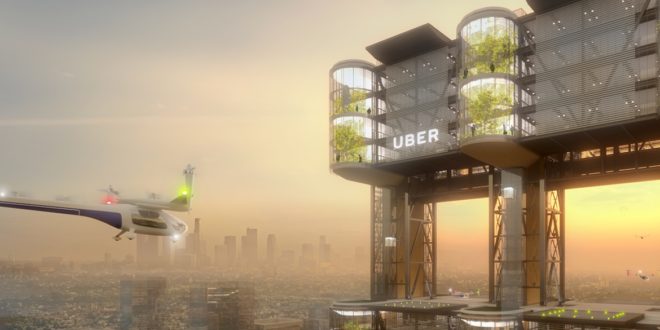This story about plans from Uber to conduct trials of commercial passenger drone technology by Kathryn Breakwell first appeared in the October 2019 edition of Australian Aviation.
A rendering from Uber of a Skyport landing and departure point. (Uber)
It may seem like a flashback scene from the animated sitcom The Jetsons, but fast forward into 2023 and Melbourne will be one of the first three cities globally to host the launch trialling the commercial passenger drone technology – Uber Air.
Melbourne was shortlisted from a global list, with the Australian government considered to be leading the world in recognising the benefits of ridesharing, and this progressive approach made Melbourne the perfect third city to trial Uber Air. Other cities to be the first participating in the trial of this service include Dallas-Fort Worth/Frisco, Texas and Los Angeles, California.
The aerial ridesharing transport option will be the first of its kind with leading aerial technology leaders and ecosystem experts working closely with Uber to develop the initiative. Uber plans to develop vehicles which are safe and quiet while ensuring they are also environmentally sound.
The Victorian Acting Minister for Economic Development, Robin Scott stated: “We’re thrilled Melbourne has been chosen as just one of three cities in the world to pilot Uber Elevate – we’re well placed to make the most of the opportunities this emerging industry will create.”
“Uber Air will add a new dimension to Victoria’s transport network – and as it takes off, we’ll work closely with Uber and relevant regulators to ensure a safe and successful trial.”
The Uber Air vehicles will take off vertically, transition to wing-borne lift in cruise, and then transition back to vertical flight to land at a Skyport. The VTOL (vertical takeoff and landing) vehicle’s cruising speed is between 240-320km/hr, and the cruising altitude is 1,000-2,000 feet above ground. Uber Air will be capable of transporting passengers on 40-100km length trips, and while initially the vehicles will be piloted, eventually they will transition to autonomous.
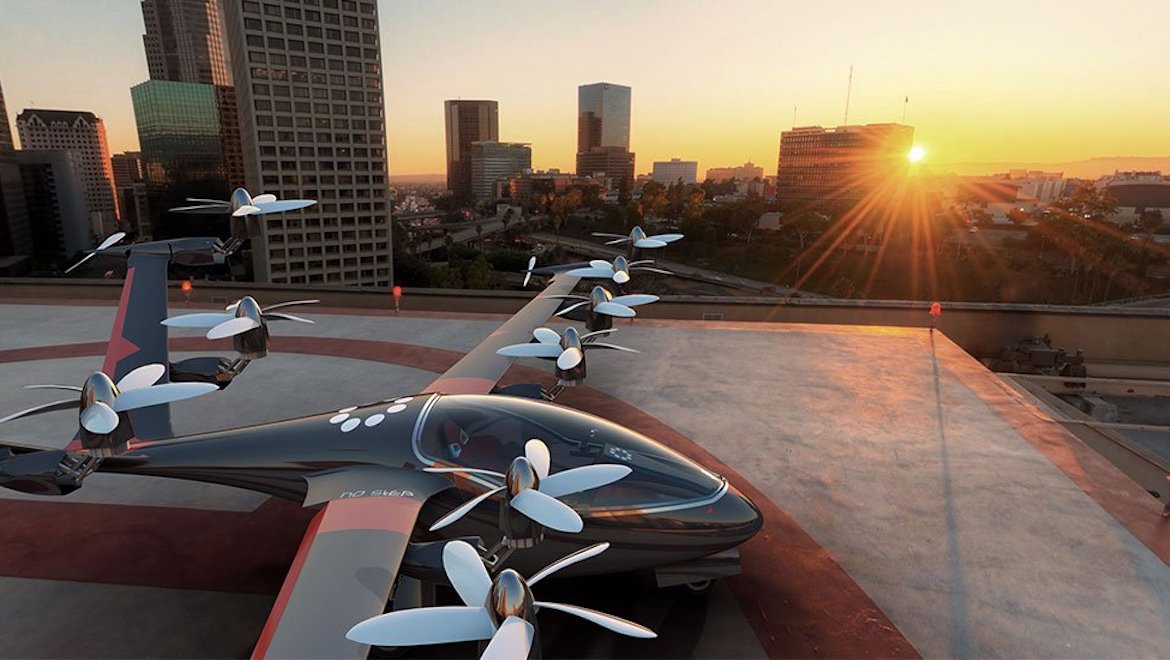
Various competitors have been vying to provide the Uber Air vehicle solution, including the Joby S2. (Joby Aviation)
But is the 2023 launch timeframe realistic? UAS Research Team Co-Leader and Lecturer and Researcher in Aerospace Engineering and Aviation at RMIT University Dr Matthew Marino believes so, and says: “You can basically split it into two categories, one technological and two the regulatory issues. The technology’s actually ready, and if you look at what Uber have at the moment and what is out there in the industry, the actual technology exists to carry people whether it be one to five people over a distance of kilometres and with an endurance of 10-20mins, so that’s completely doable, and we have technology now that’s proven to do so.”
“The biggest problem here is that there is currently no regulatory framework for electric aircraft that actually carry passengers, which proves to be the biggest hurdle to get across, and this is where a lot of the investigation is taking place at the moment,” Dr Marino said.
“So I believe that in this country Melbourne has been chosen because we have a very forward thinking regulatory body – CASA, and they’ll work hand in hand with Uber to figure out exactly how safe the aircraft is and that will be quantified via trials, and also what type of regulation is to be implemented in order to allow short trips from, in the first instance, the airport to the city.”
One question would be how Uber will manage maximum load capacities associated with the huge disparity among human body types along with luggage, however the cabin is designed with four passenger seats situated behind the pilot, allowing riders to board easily and there will be enough space for a passenger to bring a personal bag or backpack.
According to Uber Elevate’s Whitepaper on the technology: “The amount of lift generated by rotors (for VTOL) and wings (in forward flight) must exceed the total vehicle weight, with occupants, by a sufficient margin to allow for climb and manoeuvring. The front-to-back and side-to-side balance is important to keep the centre of gravity aligned with the centre of lift, again with a sufficient margin to allow safe control in all regimes of flight. The limits are solidly determined during flight test, when the operating envelope is determined. This is where the term ‘push the envelope’ comes from – test pilots push the operating envelope until the aircraft becomes uncontrollable, and then you know you can’t fly it beyond that point. Pilots are required to evaluate loading for every flight to assure that these parameters remain within limits.”
Uber Air strives to be all-electric from inception of the passenger technology, separating it from anything that exists today including helicopters. Uber’s Head of Public Policy and Government Affairs in Australia and New Zealand Mitch Cooper says the company’s mission was to “create a safe, scalable aerial rideshare network propelled by vehicles that are quiet, safe and green”.
“Our partners are designing to specifications that will emit less noise than any other man-made thing in the sky – except gliders and balloons – so that communities want Elevate to be in their neighbourhood,” Cooper said.
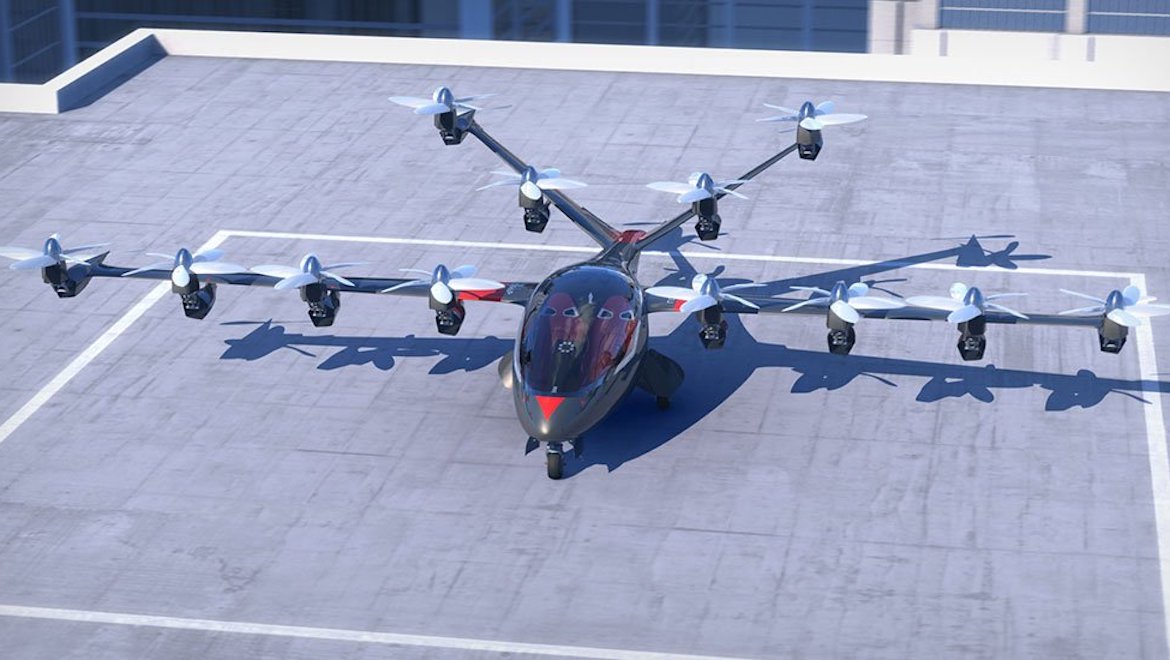
The Joby S2. (Joby Aviation)
An obvious concern for the travelling passengers and community alike is safety, and Uber has taken a collaborative and cooperative approach with cities and government stakeholders. Cooper reinforces that “for Uber’s Elevate program safety has always been an integral part of our planning and it remains so.
“Uber will continue to work closely with city and country stakeholders to ensure that we create an urban aviation rideshare network that is safe, quiet, environmentally conscious and supports multi-modal transportation options,” Cooper said.
“Safety is the foremost consideration in everything Uber embarks on. For the last several decades planes have been the safest form of travel in the United States so naturally we want to embed those standards into our Elevate DNA. It’s why one of our first hires for Uber Air was a head of safety and why we’re establishing a safety framework that ensures rigorous standards across every phase of this journey.
“We look forward to working with our partners and Australia’s world-leading aviation regulators and agencies to ensure our Victorian trial is a success.”
Civil Aviation Safety Authority (CASA) spokesman Peter Gibson advised that: “We have set up meetings with Uber to set out Australia’s aviation safety rules and requirements. When they have proposals they will submit those for assessment and approval as needed.”
Gibson confirmed that CASA had no concerns relating to the introduction of this new ridesharing technology.
“This is normal regulatory and safety business for CASA, albeit with new technology. There will be challenges, but CASA has shown it is capable of meeting the challenges of new technology. Australia has been a world leader in drone regulation,” Gibson said.
When asked what action CASA is undertaking to regulate the airspace with the use of commercial drone technology of this scope and nature, if there would be altitude requirements and limitations place upon Uber Air vehicles, and how delivery of this service would be regulated with current helicopter activity in and around Melbourne CBD, Gibson responded that these were “all good questions and yet to be determined”.
“These will be manned aircraft – with a pilot – so they will share the skies with other air traffic in much the same way as helicopters do now,” Gibson said.
“In the longer term unmanned flights will operate under a new and yet to be developed air traffic management system. That system will have to integrate with other air traffic systems, existing and yet to be developed.”
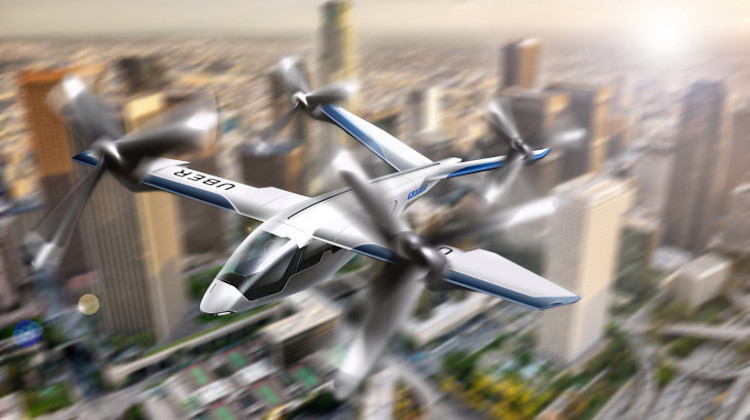
Uber Air partner Karem Aircraft has established the Butterfly aerial vehicle as an option.
(Karem Aircraft)
As the vehicle would be piloted, the operation of commercial drone passenger technology being used within densely populated and built-up areas, such as high-rise spaces of Melbourne CBD, will operate in much the same way as helicopters do today. However CASA advises that as the technology transitions to unmanned aerial vehicle operations, this would then require yet to be developed traffic management systems.
Dr Marino considers there to be no major technical issues with this technology, stating that “it’s a very simple technology, it has electric motors providing the majority of the propulsion and many electric motors which provides good redundancy, it has battery systems with high energy density lithium-based batteries and it works off a basic autopilot”.
“It’s basically a scaled up drone to carry people. In terms of the base of the technology it’s rather simple. It has few moving parts and the whole system is based on electricity so you can actually build up a safety case pretty easily with this type of system. The thing is we’re just introducing it now. It’s a brand new system so of course there’s going to be some concern about how safe it is, but I have no doubt that you can actually make it as safe, or if not safer than a helicopter,” Dr Marino said.
One perceived risk factor is the loss of GPS signalling which can become obstructed within a densely built region with high-rise buildings, and the type of safety measures Uber would have in place to mitigate loss of GPS connectivity.
Dr Tom Prevot, Director of Engineering, Airspace Systems, Uber Elevate says “it’s important to remember that at launch, all these vehicles will be piloted”.
“We will deploy aircraft that are designed to navigate in GPS-denied or GPS-degraded environments. There are different technical solutions for this. The GPS can be augmented with Inertial Measurement Units (IMU) to continue to track for intermittent very short GPS signal losses. For longer losses we use other sensors (typically opto-electrical, such as a camera) to continue to locate and track the position of the aircraft,” Dr Prevot said.
Another consideration being developed into the introduction of this technology to Melbourne is the takeoff and landing points for the vehicles, referred to as Skyports.
Uber’s Cooper advised that “no decisions have been taken on Skyport locations”.
“As a tech company, we start with data to better understand how cities move and consider where Skyports might work in any city. But this is just the beginning of the conversation with communities, governments and customers, as we – together – start to think about site selection and where Skyports will best fit into a city like Melbourne,” Cooper said.
“Uber will continue to work closely with key stakeholders to determine more of the practical elements regarding this project. It was this existing collaborative approach that helped secure Melbourne as a launch city and it will continue to be the reason Australia is able to pilot a safe and reliable trial.”
Victorian Acting Minister for Economic Development Robin Scott adds that the locations for Skyports will be determined over time.
“Uber has stated they intend to use locations such as repurposed decks of parking garages, existing helipads, tops of buildings and unused land that will be best placed to serve demand areas,” Scott said.
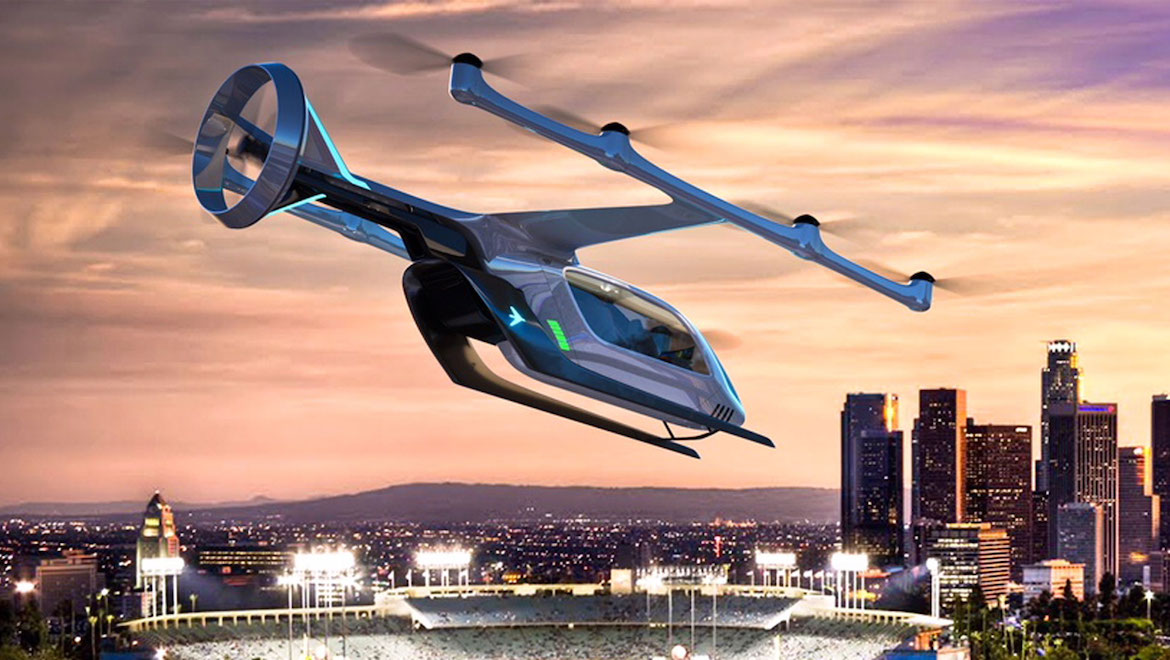
Embraer has also partnered with Uber Elevate to develop its aptly named DreamMaker eVTOL vehicle. (Embraer)
When recently interviewed on ABC Radio Melbourne, CASA’s Gibson stated that the list of challenges for Uber Air was a long one, and included the company requiring a safety certification for the new battery-operated aircraft – which doesn’t exist yet, and that the airspace used would need to be managed by authorities.
Additionally, other challenges included the specialised training requirements for the pilots operating the drone technology, along with the infrastructure for the Skyports not yet built. CASA advised that it had not set any deadlines, and the timeline would be up to Uber.
With Melbourne transport infrastructure burdened by rapid population growth, Uber Air will soon be offering an innovative, affordable option to beat the on-road traffic congestion headaches.
On whether Melbourne passengers are ready for such innovative ridesharing technology, Uber’s Cooper said: “Almost four million Australians have embraced Uber and the concept of ridesharing since we launched here almost seven years ago. Australians champion innovation which is why we believe they will embrace simple, safe and affordable ridesharing in the sky too.”
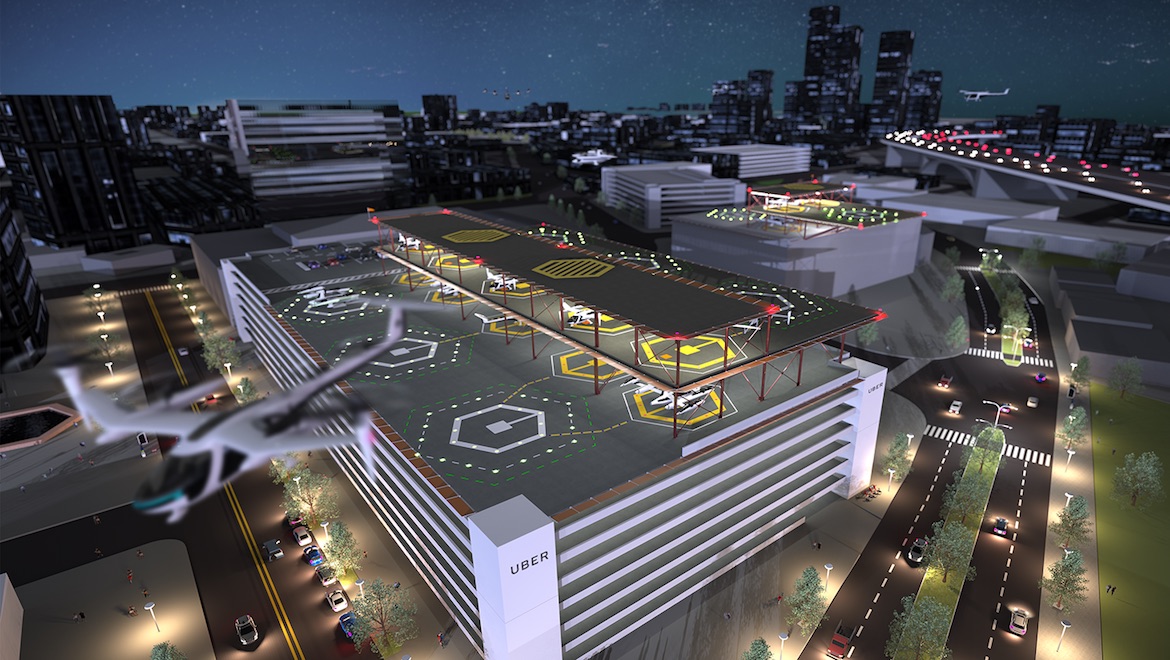
Uber envisages a network of Skyports across major cities. (Uber Air)
This story first appeared in the October 2019 edition of Australian Aviation.
 Unmanned Aerial Vehicle The latest drone news
Unmanned Aerial Vehicle The latest drone news
